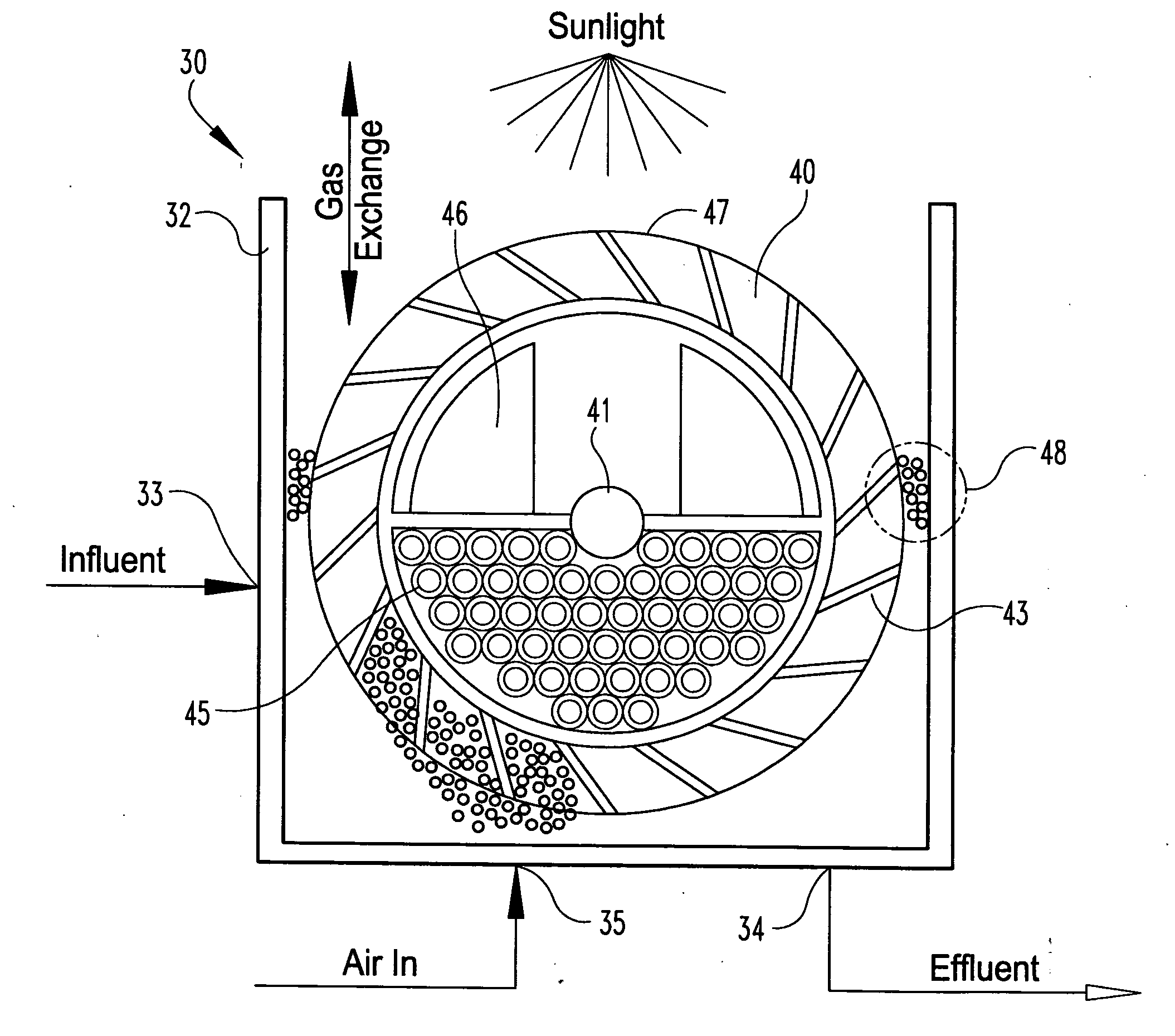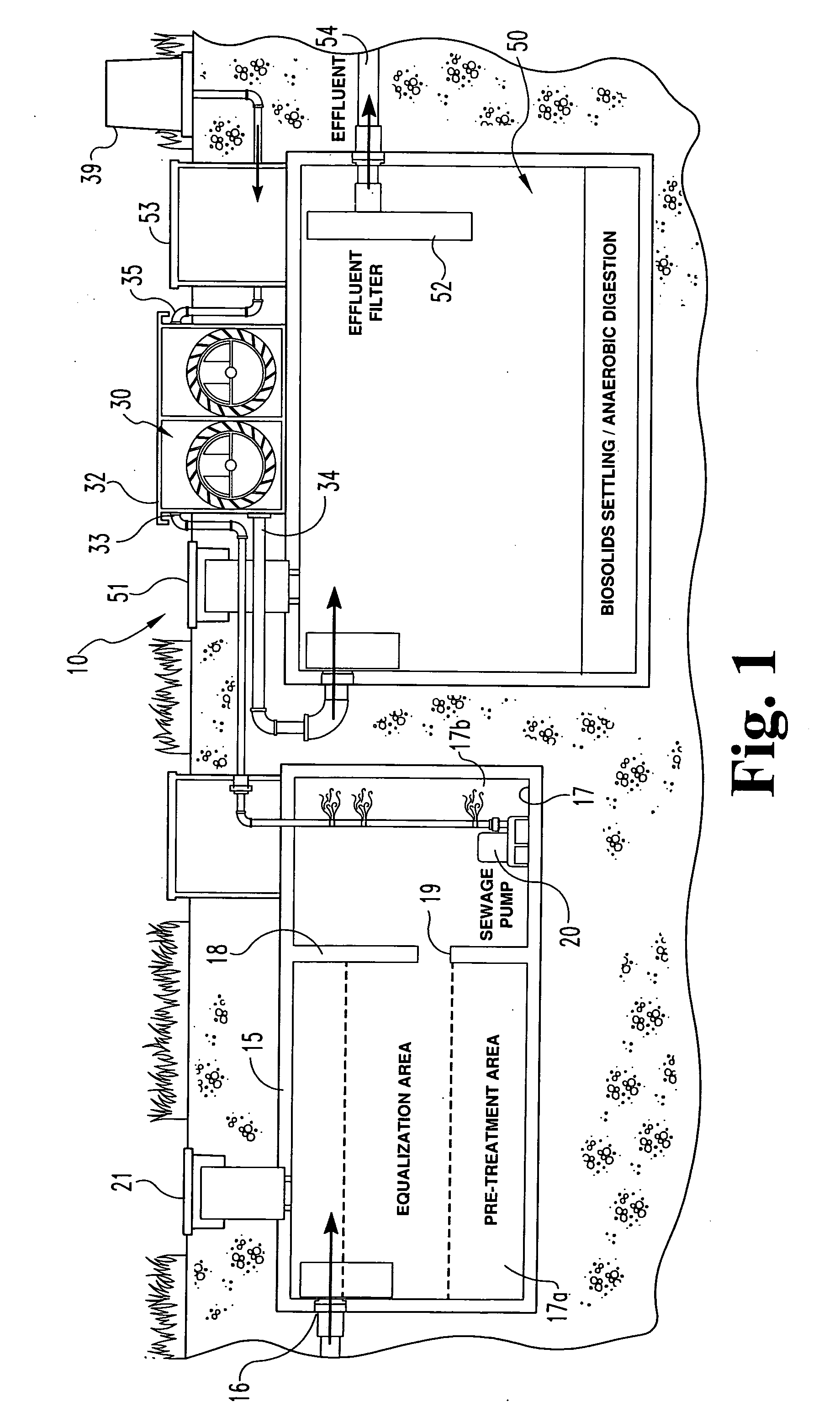System and Method for Biological Wastewater Treatment and for Using the Byproduct Thereof
a biological wastewater and treatment system technology, applied in the field of biological wastewater treatment systems, systems and methods for treating wastewater and using the byproducts of such treatment, can solve the problems of inability to meet the needs of biological reactions, etc., to achieve the effect of facilitating the growth of bacteria and facilitating the following biological reaction
- Summary
- Abstract
- Description
- Claims
- Application Information
AI Technical Summary
Benefits of technology
Problems solved by technology
Method used
Image
Examples
Embodiment Construction
[0035]For the purposes of promoting an understanding of the principles of the invention, reference will now be made to the embodiments illustrated in the drawings and described in the following written specification. It is understood that no limitation to the scope of the invention is thereby intended. It is further understood that the present invention includes any alterations and modifications to the illustrated embodiments and includes further applications of the principles of the invention as would normally occur to one skilled in the art to which this invention pertains.
[0036]In one embodiment, a wastewater treatment facility 10 is provided that is adapted for relatively small-scale usage. For instance, the facility 10 shown in FIG. 1 may be used for treatment of residential or commercial wastewater where the wastewater flow rate is as low as about 500 gal / day. A facility of this type may also be used for moderate wastewater flows up to about 25,000 gal / day. The system 10 inclu...
PUM
| Property | Measurement | Unit |
|---|---|---|
| shear forces | aaaaa | aaaaa |
| mechanical failure | aaaaa | aaaaa |
| surface area | aaaaa | aaaaa |
Abstract
Description
Claims
Application Information
 Login to View More
Login to View More - R&D
- Intellectual Property
- Life Sciences
- Materials
- Tech Scout
- Unparalleled Data Quality
- Higher Quality Content
- 60% Fewer Hallucinations
Browse by: Latest US Patents, China's latest patents, Technical Efficacy Thesaurus, Application Domain, Technology Topic, Popular Technical Reports.
© 2025 PatSnap. All rights reserved.Legal|Privacy policy|Modern Slavery Act Transparency Statement|Sitemap|About US| Contact US: help@patsnap.com



